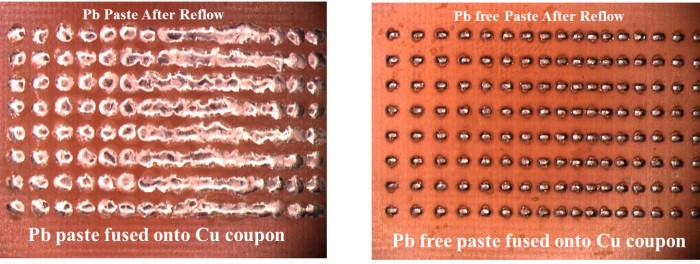Folks,
Happy Birthday RoHS!
A milestone occurred, and it seemed to be missed:RoHS celebrated its 15th birthday on July 1st!
For those new to electronics assembly, RoHS stands for Restriction of Hazardous Substances. This law’s most dramatic effect on electronics manufacturing was the virtual elimination of lead from solders, except for a few exemptions.
I remember the fear and trepidation that surrounded the July 1, 2006 RoHS implementation date. Here were some of the predictions:
- Electronics would be piling up at EU country borders as the receiving countries will not know how to check for RoHS compliance.
- The changeover to lead-free solder would be expensive and disastrous to electronics manufacturers.
- The reliability of electronics would plummet as lead-free solder had little reliability history.
- In the extreme, some predicted a near collapse of the electronics manufacturing industry.
One prediction that was accurate was that changeover would be expensive, I remember seeing some estimates of $25B (US). I actually think this figure was on the low side. My thinking is that $25B is less than 2% of one year’s electronics production, which was about $1.3T in 2006 and about $2.2T today. So, $25B just seems low to me, but it is only a gut feel.
None of the other concerns occurred in any significant way. Regarding the reliability concerns, I devised a simple test. The IT folks at Dartmouth’s Thayer School of Engineering purchase millions of dollars of electronics each year. Surely if the advent of lead-free solder reduced reliability significantly, they would know. So, in about 2013 I asked them, “Has electronics reliability decreased since RoHS?” Their answer:“What’s RoHS?” A further discussion revealed that they knew of no changes in reliability of electronics. It is interesting that they pointed out that, in their experience, most electronics fail due to mechanical issues, like connector or keyboard fails.

Figure 1. Tin-lead solder wets and flows much better than lead-free solder. This seeming advantage of tin-lead solder is a disadvantage if close lead spacings are required.
There is one advantage of lead-free solders that still seems to go unnoticed; its poorer wetting and flow enables closer lead spacings. See Figure 1. Without lead-free solder, miniaturized electronics would be a greater challenge to manufacture. So thank lead-free solder for the convenient size of your smartphone!
Cheers,
Dr. Ron



